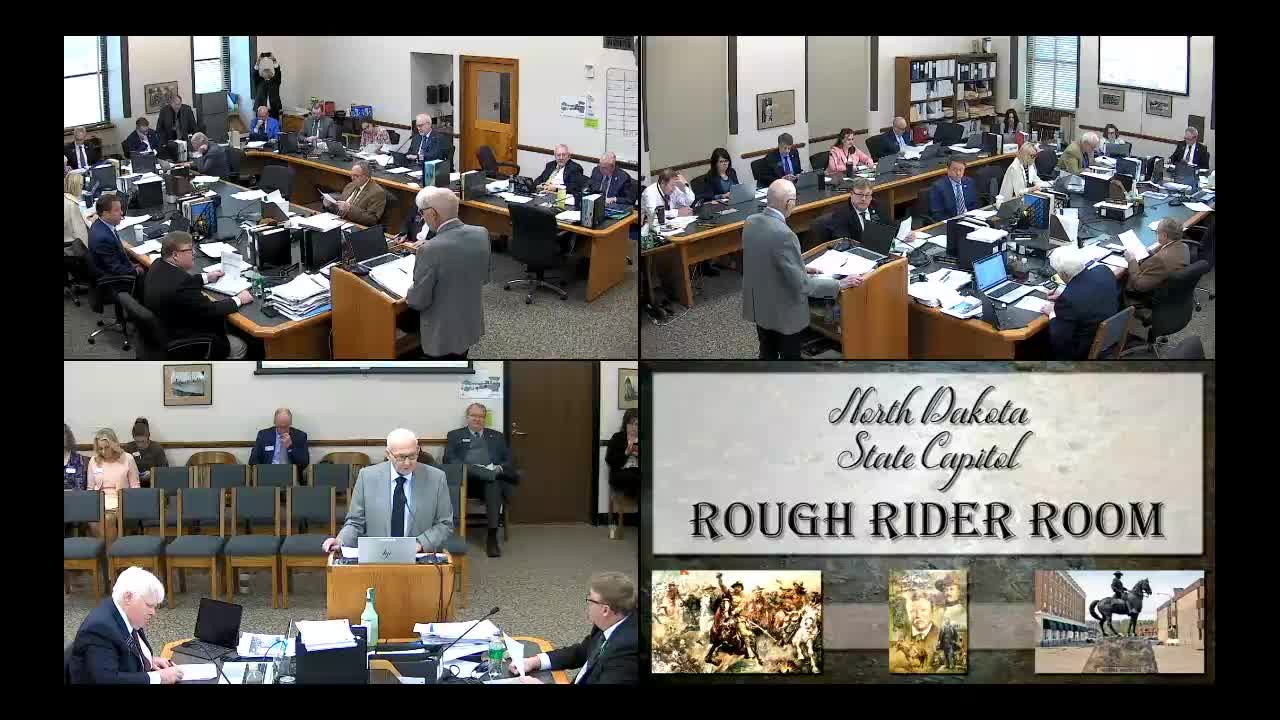North Dakota launches new funding initiatives for higher education student support
April 17, 2025 | Appropriations, House of Representatives, Legislative, North Dakota
This article was created by AI summarizing key points discussed. AI makes mistakes, so for full details and context, please refer to the video of the full meeting. Please report any errors so we can fix them. Report an error »

In a recent meeting of the North Dakota Legislature's House Appropriations Committee, discussions centered on the evolving landscape of higher education funding in the state. As representatives gathered, the atmosphere buzzed with anticipation over the proposed adjustments to financial support for colleges and universities, reflecting a commitment to enhance student retention and attract new enrollees.
The meeting highlighted a significant maturation of funding formulas designed to address the infrastructure needs of educational institutions. A building fund has been established, allowing campuses to tackle essential facility upgrades. While these improvements may not be monumental, they signify a steady progression towards maintaining and enhancing the educational environment.
A key focus of the discussion was the importance of attracting and retaining students, with the current enrollment figures showing approximately 33,000 full-time equivalents and over 40,000 total students. To bolster these numbers, the committee outlined a three-pronged approach: traditional scholarships and grants, unique challenge grants specific to North Dakota, and tuition waivers. This comprehensive strategy aims to create a robust support system for students, ensuring they have the financial resources necessary to pursue their education.
Among the notable initiatives discussed was the needs-based grant program, which utilizes federal funds to provide substantial financial assistance to qualifying students. The proposed budget includes an increase to $32 million for these grants, underscoring the state's commitment to supporting students in need.
Additionally, the meeting introduced the Career Builders program, a collaborative effort with the Bank of North Dakota. This initiative identifies high-demand workforce areas and offers scholarships or loans to students pursuing relevant fields, contingent upon a commitment to work with participating employers for a minimum of three years.
The Professional Student Exchange Program (PSEP) was also highlighted, allowing North Dakota students to enroll in graduate programs not offered in-state, such as veterinary medicine and dentistry, at in-state tuition rates. This program exemplifies the state's efforts to provide equitable access to education while managing costs effectively.
As the meeting progressed, the committee reviewed tuition rates across institutions, noting that the financial aid available could significantly offset costs for students. This transparency in tuition and funding sources aims to empower students and families in their educational decisions.
The discussions concluded with a nod to the ongoing refinement of funding formulas initiated under previous administrations. These adjustments are designed to provide predictability for institutions, allowing them to plan effectively for the future.
As North Dakota continues to navigate the complexities of higher education funding, the commitment to enhancing student support and institutional stability remains clear. The outcomes of these discussions will likely shape the educational landscape for years to come, fostering a more accessible and supportive environment for students across the state.
The meeting highlighted a significant maturation of funding formulas designed to address the infrastructure needs of educational institutions. A building fund has been established, allowing campuses to tackle essential facility upgrades. While these improvements may not be monumental, they signify a steady progression towards maintaining and enhancing the educational environment.
A key focus of the discussion was the importance of attracting and retaining students, with the current enrollment figures showing approximately 33,000 full-time equivalents and over 40,000 total students. To bolster these numbers, the committee outlined a three-pronged approach: traditional scholarships and grants, unique challenge grants specific to North Dakota, and tuition waivers. This comprehensive strategy aims to create a robust support system for students, ensuring they have the financial resources necessary to pursue their education.
Among the notable initiatives discussed was the needs-based grant program, which utilizes federal funds to provide substantial financial assistance to qualifying students. The proposed budget includes an increase to $32 million for these grants, underscoring the state's commitment to supporting students in need.
Additionally, the meeting introduced the Career Builders program, a collaborative effort with the Bank of North Dakota. This initiative identifies high-demand workforce areas and offers scholarships or loans to students pursuing relevant fields, contingent upon a commitment to work with participating employers for a minimum of three years.
The Professional Student Exchange Program (PSEP) was also highlighted, allowing North Dakota students to enroll in graduate programs not offered in-state, such as veterinary medicine and dentistry, at in-state tuition rates. This program exemplifies the state's efforts to provide equitable access to education while managing costs effectively.
As the meeting progressed, the committee reviewed tuition rates across institutions, noting that the financial aid available could significantly offset costs for students. This transparency in tuition and funding sources aims to empower students and families in their educational decisions.
The discussions concluded with a nod to the ongoing refinement of funding formulas initiated under previous administrations. These adjustments are designed to provide predictability for institutions, allowing them to plan effectively for the future.
As North Dakota continues to navigate the complexities of higher education funding, the commitment to enhancing student support and institutional stability remains clear. The outcomes of these discussions will likely shape the educational landscape for years to come, fostering a more accessible and supportive environment for students across the state.
View full meeting
This article is based on a recent meeting—watch the full video and explore the complete transcript for deeper insights into the discussion.
View full meeting
